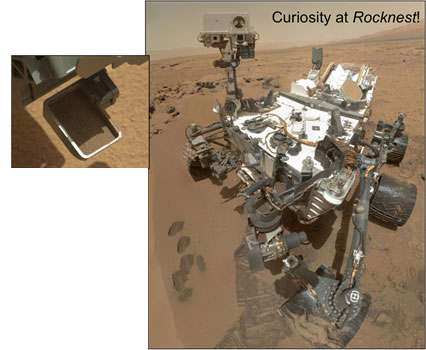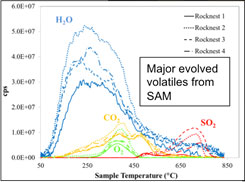Investigating the Signatures of Aqueous Alteration on Mars
By:
Amy McAdam

| When: | Wednesday, June 19, 2013, 12:00 p.m. |
| Where: | Seminar Conference Room, 10100 Burnet Road, Bldg 196-ROC, Austin, Texas 78758 |
| Host: | Joe Levy, UTIG |
Click for a Live Broadcast.
Abstract
The nature of the martian surface environment, and the implications for past and present alteration conditions, have important implications for understanding martian climatic history, surface weathering processes, and ultimately the possibility of past or present life.
The characteristics of martian surface materials, and implications for formation environments, can be investigated using several key approaches. In this talk, I will discuss my recent work on terrestrial analogs to martian materials, as well as in situ analyses of martian surface materials from the recently landed Mars Science Laboratory (MSL) rover Curiosity.

I plan to present the results of MSL-like analyses of Mars-relevant materials carried out during several field seasons of the Arctic Mars Analog Svalbard Expedition (AMASE), as a member of the Sample Analysis at Mars (SAM) instrument team. AMASE expeditions have investigated a range of geologic settings on the arctic archipelago of Svalbard with methodologies and techniques under development for Mars missions. During AMASE, I worked with a complementary instrument setup that simulates measurements made by the MSL SAM instrument. SAM analyzes gases evolved by pyrolysis of samples, as well as atmospheric gases admitted through an atmospheric inlet. A suite of instruments inside SAM are used to carry out isotopic and chemical analyses of Martian samples, including studies of inorganic compounds and a sensitive search for volatile organic sample components, thereby investigating Martian geochemical processes and potential habitability. The results of the AMASE SAM team analyses, together with other AMASE team data, have given us valuable insight into the organic content, organic-mineral associations, and mineralogy of several analog materials. These results and interpretations are relevant to the interpretation of in situ analyses from MSL.
I also plan to give a brief overview of MSL results that will primarily center on SAM solid sample analyses, though some comparisons to other MSL instrument datasets will be included. Although MSL has analyzed many rocks and soil samples since landing in August of last year, SAM solid sample analyses have only been performed on a select few of the samples. I will discuss the results of analyses of soil materials from the Rocknest aeolian bedform, selected results from analysis of drilled powder from the rock John Klein, and preliminary implications of these results for surface alteration environments and habitability on Mars.




